#Jarilo
Text

i thought it'd be funky if i had different designs for him,,
#i'm gonna do one for morana as well :D#then i want to try and draw some more gods#jarilo#slavic mythology#art#digital art#just made him look slightly more tired. and just;; down.#probably gonna exaggerate it further lmao
427 notes
·
View notes
Photo

Slovenian post card depicting st. George as folk tradition understands him.
He is bringer of spring and blooming flowers, substituting for fertility deity Jarilo.
Author: Maksim Gaspari
717 notes
·
View notes
Text

VASANT and YARILO's love child :3
Model: Kacper Ostrycharczyk (thanks @tum-naam-sochlo-merese-ni-hora
#hindu mythology#hindu gods#vasant#vasanta#hindu myths#hinduism#hindublr#desiblr#desi tumblr#desi tag#desiposting#slavic mythology#slavic gods#yarilo#jarilo#vasant x yarilo
17 notes
·
View notes
Text

Yarilo 🤝 Persephone
#Yarilo#Jarilo#persphone#slavic mythology#Slavic gods#Slavic deities#greek mythology#Greek gods#Greek deities#spring and rebirth besties#Greek goddess#Greek goddesses#Hades#veles
10 notes
·
View notes
Text
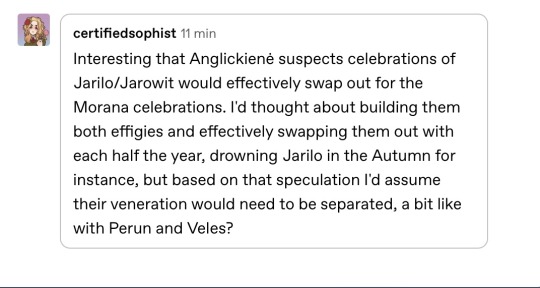
@certifiedsophist
Mock funerals of Morana and Yarilo belong to the exact same type of a holiday - a rather common form of ritual found in many cultures that is supposed to end one season and bring about another, and can be performed at the cusp of any season. There are many other rituals of this kind among the Slavs: funeral of rusalka, of a cuckoo, Maslenitsa, etc. The details and the character dying will vary but the principle remains the same.
Basically, every season of the year could have its special provody ritual that ended it. We can find the most striking similarities with the mock funeral of rusalka in the Kupalo festivities which took place on the summer solstice, that is on the Eve of John the Baptist, Ivan Kupalo (23rd–24th June), and in which a male ithyfallic effigy, called Kupalo, Jarilo, Kostroma, etc., was buried and sometimes resurrected again. Kupalo festivities took place near water and were replete with erotic symbolism, bathing, fire jumping, and dancing on the ritual fields called igrišta – church literature reprehended the orgiastic nature of this ritual.
Rusalki: Anthropology of Time, Death, and Sexuality in Slavic Folklore by Jiri Dynda
In some regions the start of spring was seen as domain of Yarilo (his very name is built from a word denoting spring or a year, which for the ancient Slavs most likely started in springtime). Western Slavs however seem to mostly celebrate Morana around this time, though of course we know Polabians had spring celebrations of Yarovit that didn’t survive the trial of time.
Similarly the summer solstice could be the domain of either, depending on the region. And so Kupalo/Kupala, another character belonging to the body of summer solstice rituals could be identified as related to either of them.
Some slavists studying Slavic midsummer rites came to the conclusion that they may represent a union of two deities, one of death and water the other of life and fire, and on the basis of some folk stories they further speculated the deities might perhaps be siblings connected by forbidden taboo love.
The idea that Morana and Yarilo as well as Perun and Veles need to remain separate at all times seems to me to be a neo-pagan addition. The concept of having to keep Perun and Veles separate was born because Veles was not among the deities whose effigies Prince Volodymyr placed on a hill outside his palace in Kyiv:
And Vladimir began to reign alone in Kiev. And he placed idols on the hill outside the palace: a Perun in wood with a silver head and a gold moustache, and Khors and Daždbog and Stribog and Simargl and Mokoš. And they offered sacrifices and called them gods, and they took their sons and daughters to them and sacrificed them to the devils.
- Tale of Bygone Years as translated in Sources of Slavic Pre-Christian Religion by J. A. Álvarez-Pedrosa
At the same time we know Veles did have an effigy in Kyiv but in a different spot.
And he himself (Vladimir), on entering Kiev, ordered the idols to be destroyed and beaten, breaking some and burning others, but he ordered the idol of Volos, who was known as the god of cattle, to be thrown into the River Pochaina, and the idol of Perun to be tied to a horse’s tail and dragged down the mountain by Borichev towards the river, appointing servants to strike the idols with sticks: this was not because the wood could feel, but to outrage the devil for deceiving us in that way. The infidels wept over this, as they had not yet received holy baptism.
- from the fragments of Life of Vladimir as translated in Sources of Slavic Pre- Christian Religion by J. A. Álvarez-Pedrosa
This is it - this is the reason people decided Perun-and-Veles-can-never-touch, even though we clearly also have sources mentioning them being invoked side by side:
Thus the Emperors Leo and Alexander made peace with Oleg, and after agreeing upon the tribute and mutually binding themselves by oath, they kissed the cross, and invited Oleg and his men to swear an oath likewise. According to the religion of the Russes, the latter swore by their weapons and by their god Perun, as well as by Volos, the god of cattle, and thus confirmed the treaty. (…)
But if we fail in the observance of any of the aforesaid stipulations, either I or my companions, or my subjects, may we be accursed of the god in whom we believe, namely, of Perun and Volos, the god of flocks, and we become yellow as gold, and be slain with our own weapons.
- Russian Primary Chronicle, Laurentian Text
It’s perfectly possible for gods to be opponents - functionally and mythically - and still be worshipped concurrently by the same people as part of the same pantheon. Additionally it’s important to remember that the pantheon of Volodymyr was likely a political tool and slavists have long debated how good of a representation for popular Eastern Slavic beliefs at the time it may be.
In principle, Vladimir’s pantheon was a response to internal socio-political changes and the external needs of the emerging Eastern Slavic state. It was a henotheistic and dynastic cult focusing on the deity which best served state building purposes - Perun. It was a product of the long evolution of the Eastern Slavic religion which in post-migration times diverged from relative conceptual unity of the common Slavic beliefs. Eastern Slavic beliefs evolved in specific geographic, ethnic and political conditions, characteristic of Eastern Europe. Its development was the response to those circumstances. Serving new needs and purposes, the Kievan cult had to incorporate new attributes and acquire a new dimension.
- Organized Pagan Cult in Kievan Rus’. The Invention of Foreign Elite or Evolution of Local Tradition? by Roman Zaroff
So tldr instead of solely looking at Morana and Yarilo separately as divine opposites I think it’s beneficial to look at both of them in the context of a larger body of similar Slavic rituals, some of which I presented in this post. Knowing how flexible those rites are can actually help significantly in building one’s personal sacred calendar to one’s needs.
50 notes
·
View notes
Text

father and son.
#nem art#weles#jarilo#digital art#illust#illustration#I love this even though not many people are likely to see it#ocs#clip studio paint#artists on tumblr#drawing#small artist#original character
47 notes
·
View notes
Photo
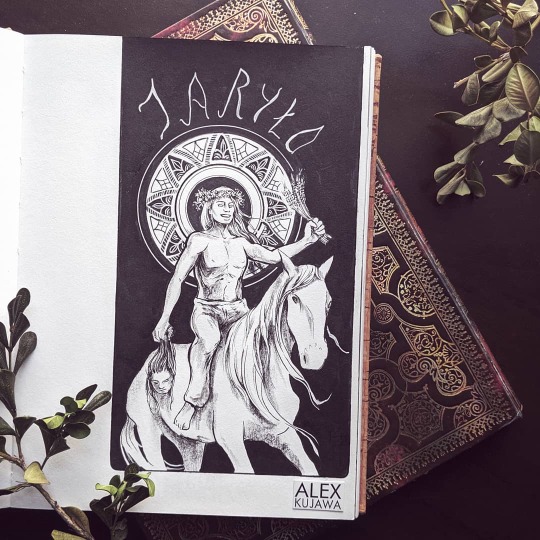

This is post 10 of 13 🌿🌿🌿 in my annual series on SLAVIC PAGAN SUMMER SOLSTICE that I like to expand in each year (and posting for the first time on tumblr).
Are you enjoying this series? Gimme a like, talk to me! I’d love to get back on tumblr if I know that people are actually seeing/enjoying my posts here.
🖤💀🌿
___________________________
Image: ”Noc Świętojańska”, prints available on my Etsy
Interested in Slavic Mythology? Check out my illustrated folklore book 31 Slavic Beings of Myth & Magic on ETSY or Amazon.
#yarilo#jarilo#kupalo#slavic mythology#gerowit#kupala night#noc kupaly#summer solstice#midsummer#midsommar
8 notes
·
View notes
Text
Perun, handing out popsicles: Which flavor do you want?
Jarilo: Blue flavor!
Perun: Uh, you mean Blue Raspberry?
Jarilo: Blue flavor! Blue flavor!
Perun: Blue is not a flavor!
Jarilo: BLUE FLAVOR!
#queue#mythology#slavic mythology#slavic gods#source: perchance generator#incorrect quotes#perun#jarilo
15 notes
·
View notes
Photo

Jarilo, the Slavic god of vegetation and springtime. It is said that he is killed by his wife Marzanna each year and is then reborn at spring. He has also been connected to the folk worship of Saint George.
23 notes
·
View notes
Text
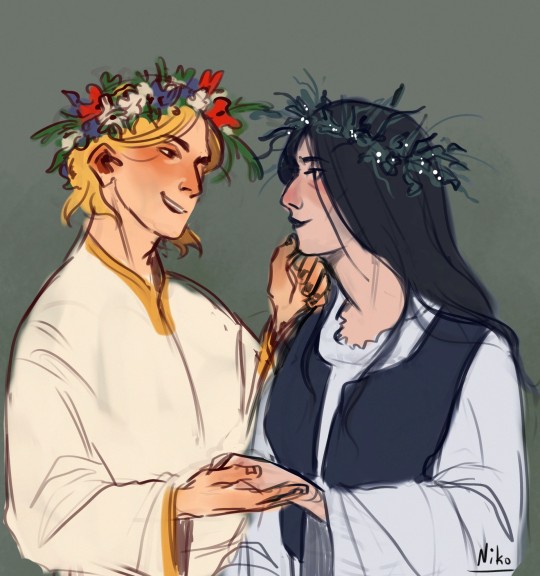
there's a version where jarilo is morana's consort (in the other version it's dažbog/dazhbog),, so here's them being together etc etc
#btw hope you don't mind me also doing slavic mythology hahaha i'm really enjoying myself :D#jarilo#morana#slavic mythology#art#digital art
317 notes
·
View notes
Photo
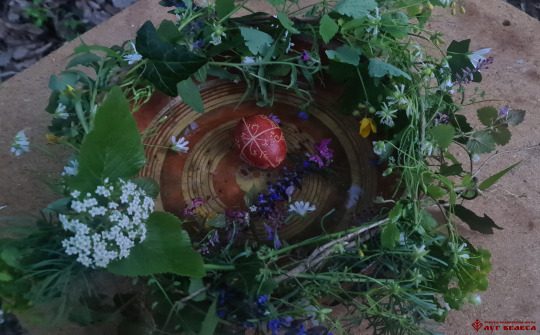








Few moments from Jariljdan* celebration held by the members of Lug Velesa.
*festival that celebrates revitalizing return of Jarilo.
#Jarilo#Jariljdan#yarilo#slavic ritual#slavic tradition#rodnovery#rodnoverje#Lug Velesa#srz lug velesa#fire#swing
118 notes
·
View notes
Text
I HAVE A NEW SHIP.
Vasant x Yarilo
Flower boyfriends that bless us with springtime together :3333
#I JUST THOUGHT ABOUT IT AND NOW I CAN'T GET IT OUTTA MY HEAD#hindu mythology#slavic mythology#hindu gods#slavic gods#vasant#vasanta#jarilo#yarilo#desiblr#hindublr#hinduism#mythology#desi tumblr#desi tag#desiposting
19 notes
·
View notes
Text
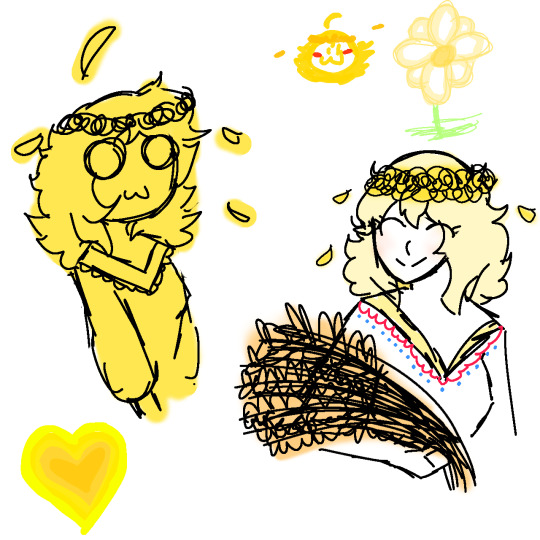
Female (gender-bend) Yarilo :333
#yarilo#Jarilo#slavic gods#slavic deities#slavic mythology#mythology#mythology art#genderbend#art#Blue-lotus arts
10 notes
·
View notes
Note
I’m sorry if this is a silly question but when exactly is Jarilo reborn and when is his sister “killed”? I know there’s a ritualistic killing that marks changing of seasons but I’m not sure when those timeframes are. Thank you !
Oh, oh, oh, but there’s a lot.
Let’s start with Morana, (who I assume you were referring to when you mentioned „Jarilo’s sister”).
We can find the oldest traces of the ritual of her drowning in an Annoucement issued in 1366 in Prague, citing „the middle of Lent” as the time it is performed - possibly pointing to the Mid-Lenten Sunday*. „Middle of Lent” is also named in the nearly identical Annoucement of 1384.
sub anno 1366
On the image of death (regarding those who bring death to the outskirts of town in the middle of Lent). It is known that in some cities, towns, and villages the pernicious habit has taken root, on the part of clergy and laymen, of bringing images in the form of death around the town to the river in the middle of Lent, accompanied by chants and superstitious representations, and that there they sink said images vehemently, arguing, to their own shame, that in this way death will not do them more harm, because it has been destroyed and wiped out from the town’s boundaries.
- Translation from Sources of Slavic Pre-Christian Religion ed. by J. A. Álvarez-Pedrosa
In the Polish statutes of Andrzej Łaskarz (dated to the early 1400s) the date given for the tradition is also Laetare Sunday or White Sunday, in which Łaskarz seems to be correcting older provincial statutes, on which he based his work and which name as the date of the ritual „Iudica Sunday** alias White Sunday”.
*The Laetare Sunday is the fourth Sunday of Lent. To the best of my knowledge it was also known as the White Sunday (although nowadays this name seems to mostly be applied to the first Sunday after Easter instead) or Mid-Lenten Sunday (biała niedziela, niedziela śródpostna).
** The Iudica Sunday is the fifth Sunday of Lent. It is also known as the Black Sunday or the Death Sunday (czarna niedziela, smrtná nedel’a).
*** The Palm Sunday is the sixth Sunday of Lent. It is also known as the Floral Sunday or the Willow Sunday (kvetná nedel’a, wierzbna niedziela).
In „Annales seu Cronicae incliti Regni Poloniae” (Annals or Chronicles of the Illustrious Kingdom of Poland) created in the years 1455–1480 Jan Długosz mentions an edict of prince Mieszko (the founder of the first independent Polish state and the man who christianized it, generally viewed by Poles as the first ruler of Poland). The story of the edict, a fictitious dramatization of Mieszko’s christianization of Poland states that Mieszko ordered his subjects to end the worship of pagan gods and destroy their temples and idols, setting the seventh of March as a deadline. On the seventh of March even the most reluctant Poles had to destroy the last images of their gods and throw their idols into rivers and swamps. According to Długosz this event was still commemorated in his times:
And although this destruction and sinking of the false gods and goddesses took place, in some towns a farce is still represented in which they worship Dzyewana and Marzyana in the form of a long stick, which is thrown and sunk in swamps on Laetare Sunday. This has been continued until our times, such that the practice of this very old custom has still not disappeared among the Poles.
- Translation from Sources of Slavic Pre-Christian Religion ed. by J. A. Álvarez-Pedrosa
Of course the theory that this tradition originated from Mieszko is highly doubtful, similar traditions can be whitnessed in many neighboring countries and they seem to have a common pre-Christian origin.
In his 1564 edition of „Kronika Wszystkiego Świata” (Universal Chronicle) Marcin Bielski mentions that:
And even today they have a tradition in Greater Poland and Silesia, that on the seventh day of March they drown Marzana, dressed like a woman; and leaving the village [to do this] they sing ”Death is writhing by the fence, she’s looking for trouble” etc.
- my translation
Later in 1597 Joachim, the son of Marcin Bielski published an annotated version of his father’s Polish Chronicle (Kronika polska Marcina Bielskiego nowo przez Joachima Bielskiego, syna jego, wydana) in which we can find Joachim’s remark that ”even in his times people still perform the same ritual on White Sunday”. The dates given here, 7th of March and White Sunday seem to mirror Długosz’s account.
Maciej Miechowita in his 1521 Chronica Polonorum (Polish Chronicle), Marcin Kromer in his 1555 De origine et rebus gestis Polonorum libri XXX (30 books about origins and achievments of the Poles) and Maciej Stryjkowski in his 1582 Kronika Polska, Litewska, Żmudzka i wszystkiej Rusi (Chronicle of Poland, Lithuania, Samogitia and all of Ruthenia) all give Laetare as the date of Morana’s drowning, however it’s necessary to note that all chronicles draw heavily from Długosz’s (and the others’) writings.
Alessandro Guagnini in his 1578 Sarmatiae Europeae descriptio (Description of Sarmatian Europe), which by some scholars is believed to be a plagiarized version of Stryjkowski’s early manuscript, cites as dates for the drowning ritual in Silesia first seventh and then seventeenth of March, which led many slavists to believe that the seventeenth might be an error.
Jakub Wujek repeats Długosz’s tale of Mieszko’s edict and bridges the dates by claiming that Mid-Lenten Sunday fell on the seventh of March in the year of the edict (Postylla catholica, to iest Kazania na każdą niedzielę i na każde święto przez cały rok, 1573).
Now I’m gonna speed forward to the work of Michał Łuczyński who in his 2008 article „Kognitywna definicja Marzanny – Próba rekonstrukcji fragmentu tradycyjnego mitologicznego obrazu świata Słowian” (Cognitive Definition of Marzanna – An Attempt at Reconstruction of a Fragment of the Traditional Mythological Appearance of the Slavic World) cites and analyses records from 19th and 20th century. Accounts provided by Łuczyński confirm that in Polish and Silesian tradition the date associated with the drowning of Marzanna (sometimes accompanied by her male counterpart Marzaniok) is the fourth Sunday of Lent. However he also mentions that the ritual can be similarly associated with Death Sunday and Floral Sunday and quotes a Czech folklorist František Bartoš’s account of Mařena being drowned on „Death (Black) Sunday”. To the best of my understanding the rituals on Floral and Black Sunday could be encountered in various places in Czech Republic and Slovakia. The male counterpart of Morana may also appear alongside her in some Czech and Slovak regions under varying names (Mařík, Mařoch etc.).
Finally Łuczyński also quotes an account mentioning the Bulgarian tradition of Mara-i-Lishanka, which as Bulgarian and Russian wikipedia tell me involves bathing/floating and then dismantling of Mara on Bright Wednesday (the Wednesday after Easter).
In present-day Poland the drowning (or burning and drowning) of Marzanna happens on 21st of March, an attempt to align the ritual with the beginning of astronomical spring and spring equinox.
Completely different dates are cited for Eastern Slavic rendition of rituals involving Mara/Morana/Marena.
I know right. How fun.
In Ukraine, in the eve of Kupala, a maple, birch or willow was cut down, erected on a hill and adorned with wreaths, flowers, rib- bons, even candles. The tree was called Morana / Mara or Gilce (such a name was also given to a wedding tree). People would perform round dances around the tree and sing.
Like on Christmas, Russians would make a straw doll, dress it in female clothing and place it under a tree. They would call the doll Kupala / Morena / Mara; in later times, it was given female names such as Marina or Katerina. A bonfire was lit near the tree, with a pole topped with an old wheel / hub or a pole topped with straws in the centre of it. Before the end of the feast, a tree was thrown into the river. A straw doll was burned down and the ashes were sprinkled across the field.
In Belarus, the bonfire was called kupala. A pole with a hub or a cow / horse skull was set in the middle of it. Girls would throw tows into the fire for a good yield of flax, while firebrands were cast around the fields. Instead of a tree, Belarusians used to make a straw doll of Mara. Singing, they would carry the straw doll behind the boundary of the village, where it was burned down or drowned.
- Slavic folklore, Didactical guidelines by Laima Anglickienė
Similar celebrations are mentioned by Łuczyński. His article contains an account of an Ukrainian tradition of drowining a clay effigy of Morynka on the day of Kupala (Saint John’s Eve). Another describes Marena (madder) also called Kupala being made out of a young tree, straw and woman’s clothing and carried around in a procession on the night of Kupala and drowned the next day. A Belarusian account mentions Mara also known as Kupala being burned or drowned on the night of Kupala.
Now onto Jarilo.
First of all most slavists whose works I’ve read believe Jarilo and Jarowit (Yarovit, Gervit, Herovith) to be the same deity. Therefore we have to start with the oldest known dates for the holiday of Yarovit.
In Sources of Slavic Pre-Christian Religion the authors note that:
In April 1127, Saint Otto of Bamberg returns to Pomerania to resume his missionary work. When he arrives in Magdeburg, he interviews Norbert, the archbishop of said see, who, moved by jealousy, attempts to delay his journey to Pomerania.
Otto arrives in Magdeburg in April, then heads to Havelberg before finally ending up in Demmin in May. This is the window of time we have to work with.
During his visit in Havelberg bishop Otto encountered a festival devoted to Yarovit, carried out by great crowds bearing standards; the date, roughly estimated as 10th of May points to it being one of the spring celebrations of local devotional calendar.”
- Mitologia Słowian by Aleksander Gieysztor, my translation
In this post I explain that two Polish slavists, Gieysztor and Szyjewski placed the celebration on Yarovit on 10th of May and 15th of April respectively. Jan Máchal also spoke out in support of the festival having taken place in April.
Michał Łuczyński (this time in Semantics of the spring rites connected to Marzanna and Jaryło) agrees that the most probable date for the festival is 14-15 of April. In the same article he points out that a similar date could be applied for the Eastern Slavic celebrations of Jarilo seeing how according to the chronicles of Voronezh, Tikhon, the bishop of Voronezh abolished the celebrations of Jarilo on 15th of April 1765 (23 or 27 of the Julian calendar according to Szyjewski).
Gieysztor reminds us of the records of a 1846 feast of Jarilo celebrated on the 27th of April (keep in mind the 12 day difference between Julian and Gregorian calendar in 1800s).
However according to Laima Anglickienė Jarilo just like Morana could also be part of Kupala celebrstions.
Jarilki – the last Sunday before the Feast of Saints Peter and Paul (29th of June) is called the Fast of Eggs of the Feast of Saints Peter and Paul. The East Slavs would boil eggs, eat them and throw them at each other. Youth would light bonfires and play games on a hill known as Jarilo bald-pate throughout the night. Women would make clay stacks – Jarilo and Jarilicho. Afterwards, they would beat or drown them. Youth would go for a swim. Apparently, Jarilki was celebrated in those regions where the feast of Kupala was not held. Little is known about this feast; most information comes from the Volga Region situated in the neighbourhood with the Mari people, who practiced paganism for the longest period of time. Ukrainians would sing songs mentioning both Kupala and Jarilo: “Jarilo passed away, so good he was / Kupala Ivan fell down to water”.
- Slavic folklore, Didactical guidelines by Laima Anglickienė
Researchers assume that summer feasts (Kupala, Jarilki, funeral of Kostroma and Feast of Saints Peter and Paul) rose from a single common source – a mass pagan feast dedicated to commemorate the peak of the summer and to get ready for harvest time. It is likely that ancient Slavs had a single feast dedicated to Jarilo (god of the sun and love, giver of life and fertility), which continued from the Feast of Saint John the Baptist to the Feast of Saints Peter and Paul (21-29 June).
- Slavic folklore, Didactical guidelines by Laima Anglickienė
Similar rituals with effigies named "Kostroma" or "Iarilo" occurred in a number of places in Great Russia, usually between Trinity* and St. Peter's Day.
- Russian Folk Belief by Linda Ivanits
*Keep the Julian calendar in mind.
As you can see pretty much all dates associated with the funerals of Kupalo, Kostroma, Kostrub, Kostrubonko or even a cuckoo could be viewed as celebrstions related to Jarilo, or at least having a common origin (more here).
Lastly an honorable mention to Saint George’s day celebrated on 23rd or 24th of April (6th of May in countries following Julian calendar). The interesting part is that we can associate Saint George (Yuri) with both Perun and Jarilo, he is also frequently placed in oppositions to entities associated with Veles. This led some slavists (Radoslav Katičić and Vitomir Belaj to name a few) to believe Jarilo might be connected to Perun, for example may have been viewed as Perun’s son. Still, as I mentioned many times before, we lack strong proof for any familial relationships between the gods.
Sources: Sources of Slavic Pre-Christian Religion, ed. J. A. Álvarez-Pedrosa, Rozmaite gry zwodząc (part of Dziady) by Leszek Kolankiewicz, The gods of Ancient Slavs by Myroslava Znayenko, Mitologia Słowian by Aleksander Gieysztor, Religia Słowian by Andrzej Szyjewski, Kognitywna definicja Marzanny - próba rekonstrukcji fragmentu tradycyjnego mitologicznego obrazu świata Słowian by Michał Łuczyński, Semantyka obrzędów wiosennych związanych z Marzanną i Jaryłą (Próba rekonstrukcji “Prasłowianskiego tekstu”) by Michał Łuczyński, Russian Folk Belief by Linda Ivanits, The mythology of all Races volume III: Celtic and Slavic by MacCulloch and Máchal, Supernatural Beings from Slovenian Myth and Folklore by Monika Kropej.
#Slavic paganism#slavic folklore#marzanna#morana#yarilo#jarilo#yarovit#slavic culture#a devotional post
96 notes
·
View notes
Text
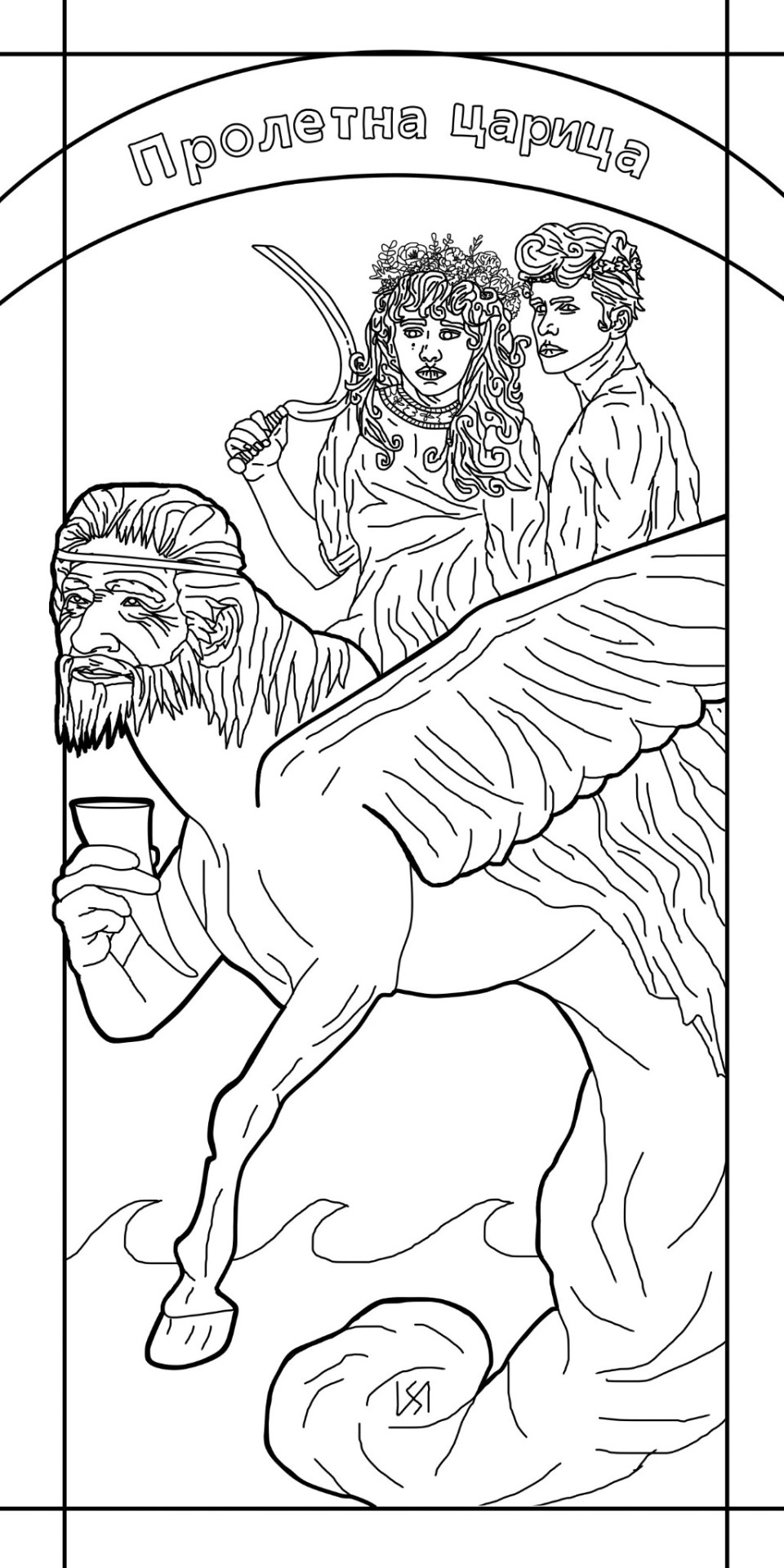
Vesna, Jarilo and Stribog riding into war with Morena to bring about spring
#art#mythology#myths#legends#slavic folklore#slavic myths#slavic mythology#slavic#bulgarian mythology#bulgarian folklore#bulgarian myth#folk#folklore#Vesna#Jarilo#Yarilo#Stribog#god#goddess#spring#queen of spring
16 notes
·
View notes
Text

Old Jarilo sketches
2 notes
·
View notes